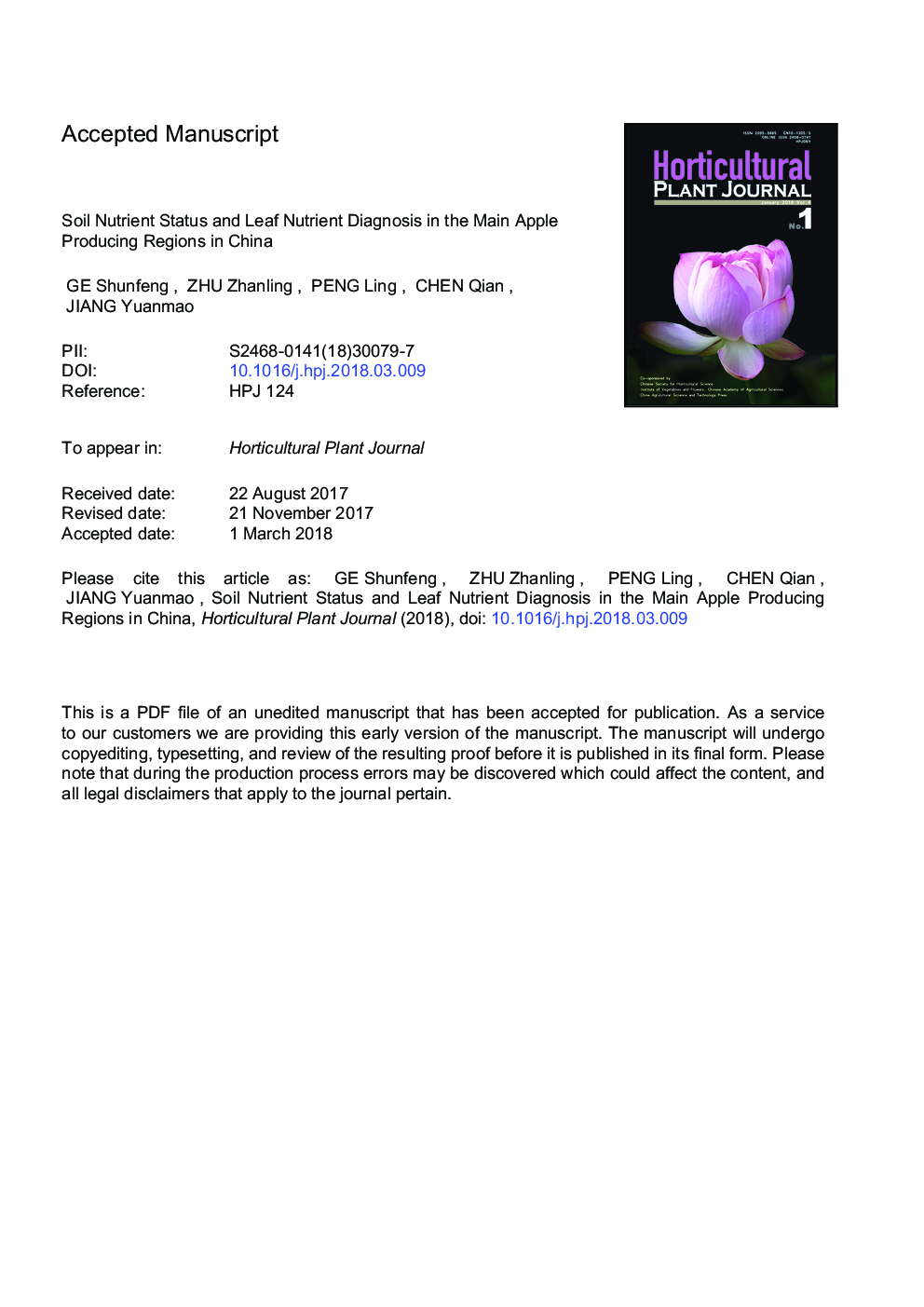| Article ID | Journal | Published Year | Pages | File Type |
|---|---|---|---|---|
| 8892157 | Horticultural Plant Journal | 2018 | 8 Pages |
Abstract
Soil and leaf nutrient analysis are widely used as effective methods of diagnosing nutrient deficiency in fruit trees, the results of which are used to properly manage fertilizer application. Therefore, a survey was conducted for assessment of the soil nutrient status and leaf nutrient concentration in 2 827 apple orchards in the Bohai Bay and Loess Plateau apple production regions of China. The soil organic matter, alkali hydrolyzable N, available P, and available K were 10.91 g·kgâ1, 73.21 mg·kgâ1, 70.22 mg·kgâ1, and 169.23 mg·kgâ1 in the Bohai Bay region, respectively, and 11.72 g·kgâ1, 56.46 mg·kgâ1, 14.91 mg·kgâ1, and 135.78 mg·kgâ1 in the Loess Plateau region, respectively. Soil organic matter was at a medium-to-low level in both regions, whereas the soil alkali hydrolyzable N was low. In the Bohai Bay region, soil available P was high, but soil available K was deficient. In contrast, both soil available P and K were insufficient in the Loess Plateau region. The Diagnosis and Recommendation Integrated System (DRIS) diagnostic results indicated that the most deficient elements were Ca and K in low-yielding orchards (<35 t·hmâ2) of the Bohai Bay region followed by Fe, N, and Zn; however in the Loess Plateau region, the most deficient elements were P and K followed by N, Zn, and Cu. The findings imply that the application of Ca, K, Fe, N, and Zn fertilizer should be increased in the Bohai Bay region, whereas P, K, N, Zn, and Cu fertilizer should be enhanced in the Loess Plateau region. Meanwhile, use of organic manure is recommended to improve soil quality in the two apple producing regions.
Related Topics
Life Sciences
Agricultural and Biological Sciences
Forestry
Authors
Shunfeng GE, Zhanling ZHU, Ling PENG, Qian CHEN, Yuanmao JIANG,
